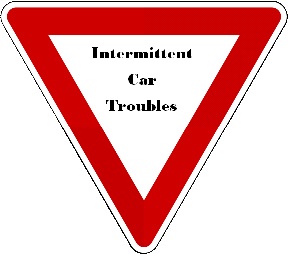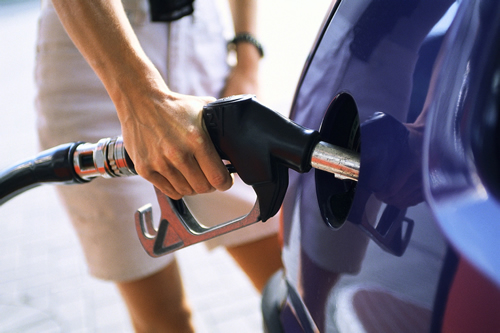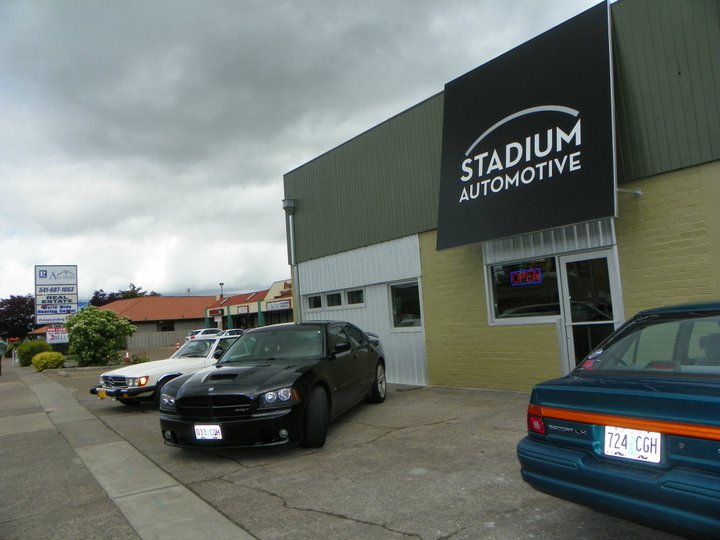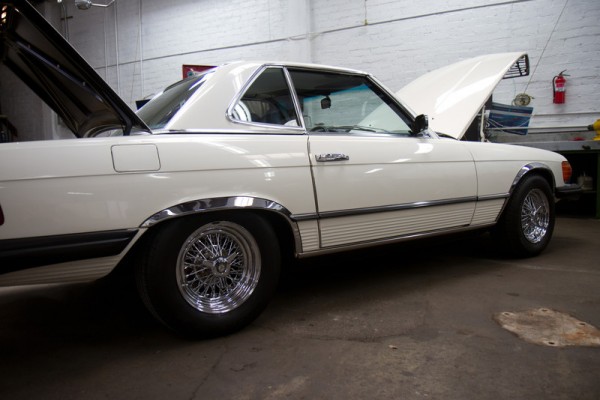Posted on 12/21/2011

One of the daily challenges that we face at our shops is diagnosing and fixing automotive problems that arise only intermittently. Drivers come to us all the time asking us to fix vibrations, noises and poor-running or no-start conditions that happen sometimes, for unknown reasons. The first is to observe and experience the symptoms of the problem. Step two is establishing a theory about the root causes of the problem. Moving to step three, you test, review and diagnose to prove or disprove your theory. The fourth and most important step is applying a remedy — in the case of auto service, repairing or replacing the parts in question — to make sure your theory is correct. If the problem does not exist all the time, however, you lose control over two or three of these steps.We have had vehicles that will crank over but won’t start. One of the first steps in this case is to read the onboard ECU (electronic control unit) to see if any fault codes have registered. If they have, we cons ... read more
Posted on 11/16/2011
These tips will help make your cold-weather journeys safermore comfortable: • Scrape all windows of ice before driving and wipe the fog off all inside windows too.• Make sure the “fresh” air mode is selected on vehicles that give you the choice. Putting on the air conditioning will help “dry” the air during moist winter months so the defroster will work faster. Most newer cars put on the A/C automatically when “defrost” is selected.• The only time I recommend warming up your car before driving is when you need to get the ice thawed on the outside and the fog cleared away inside. Of course, don’t leave your running car unattended as a temptation to thieves.• If you can, keep your vehicle in a garage; it eliminates ice and fog problems, making winter driving safer.• Coat weather stripping around vehicle doors with a thin coat of petroleum jelly to prevent them from freezing shut. Prying open a door that is frozen shut can rip the weather stripping, which is expensive to replace. If the d ... read more
Posted on 10/25/2011
Collisions peak during deer mating season, which is from October to December. Now more than ever, watch for deer in the road. According to State Farm, deer-car collisions are on the rise. They are up 21 percent over the past two years compared to five years ago. Collisions peak during deer mating season, which is from October to December. When bucks chase does during the mating period, they behave much less cautiously. In Oregon, a driver faces a 1-in-300 chance of hitting a deer every year. The average damage is around $3,000, and about 150 fatalities result from these collisions each year in the United States. Here are some safe-driving pointers to reduce the chances of colliding with deer: Respect deer crossing signs. They exist in locations where collisions have happened before. Deer are most active between 9 p.m. and 9 a.m. Use more caution during these hours. Most deer travel in herds, so if one crosses the road in front of you, more may be coming. Slow down. Use high beams w ... read more
Posted on 9/30/2011
One of the most frequent questions I hear from parents is, "what kind of car should I get for my children when they reach driving age"? Most parents have the same thing in mind: "hand me down" vehicles. The thinking goes, "as soon as my kid turns 16, I’m going to give him my old car and I’m going to get a new one." Or, maybe a father wants to get his child a vehicle he had or wanted when he was younger, like a Volkswagen Beetle or an old BMW 2002. Those are great old cars in many ways, but there is a very serious thinking flaw happening here. When children reach driving age, they have very little experience behind the wheel. Many also have an attitude of invincibility. Nationally, driving accidents are one of the leading causes of death for teens. The newer a vehicle is, the more safety equipment it will have. Newer features such as anti-lock brakes (ABS) and stability control will even help control a vehicle so an accident doesn’t happen. Front and side air bags and engineered ... read more
Posted on 9/16/2011
Save Money By Thinking Ahead One of my friends, Dan, who owns another auto shop, asked me to remind people that any all-wheel-drive vehicle must have tires replaced as sets of four, rather than in pairs. The rolling diameter needs to be the same on every tire for AWD cars, and if the diameter is different, there is the risk of ruining the transmission and differential unit. He had a customer who replaced only two tires and as a result had to pay for more than $3,000 worth of repairs. Front and rear tires usually wear at different rates, so by rotating them every 5,000 to 10,000 miles, all of your tires will wear out at the same time. This will make replacing all four tires less frequent and save you money. -George Rode
Posted on 9/8/2011

In the next few years, the average fuel economy will increase as required by the federal government. An engine with direct injection gets about 10 percent more power, uses about 10 percent less fuel and emits fewer pollutants. The CAFE (corporate average fuel economy) will double in the next 15 years. Many innovative fuel-saving, power-boosting technologies will be used on the next generation of power trains. One of the most intriguing is direct injection. This type of system injects fuel directly into an engine’s combustion chamber under very high pressure. Injection pressures vary between 22,000 and 30,000 pounds per square inch. As a comparison, the water pressure in an average home’s plumbing system is about 80 PSI. The advantage of this system is much more control of the combustion process. An engine with direct injection gets about 10 percent more power, uses about 10 percent less fuel and emits fewer pollutants. So why don’t all engines include direct injecti ... read more
Posted on 7/29/2011
It is now summer, the time for vacations and lots of car travel. Car travel has been going up in popularity the past few years, with many families choosing to spend their vacations by taking road trips to great spots in the United States. Getting your vehicle ready for a trip during the hot weather can make a vacation much more stress free. The first stop should be your favorite repair shop, like Stadium Automotive, where you can ask for a pre-trip check. This is most important for vehicles with more than 80,000 miles and those that have not had good, consistent preventive maintenance. The most important focus should be the cooling system, one of the largest and most important systems in your vehicle. About 85 percent of all major engine damage happens when an engine overheats. Your repair shop should pay special attention to all the cooling hoses, the water pump, radiator and other parts of the system. Newer vehicles include a lot of plastic in the cooling system that gets brittle w ... read more
Posted on 7/22/2011

Just about every day, we get asked if the “check-engine” light and ABS (anti-lock brake system) lights in a vehicle are really important. We have many customers who come in and are not overly concerned about those lights. The “check engine” light tells so much, it just amazes me. Where else can you have something as complex as a vehicle warn you that something is malfunctioning or about to break down? Recently we had a customer who came in for other repairs and said not to worry about the check-engine light, that he knew he needed an oxygen sensor but didn’t think it was important. I spent the time to point out many concerns that I had about this. First, the check-engine light comes on when something is malfunctioning or about to break down. It could be one of some 200 different problems, which will not be specifically located until a scanner is hooked up to the vehicle. If more than one problem is present, the light doesn’t light brighter or blink to let you know. It just comes on ... read more
Posted on 7/19/2011

Thank you to all of you who joined us for our Grand Opening Celebration June 13-17 in Eugene! FREE hot dogs and pop were served all week long and 30% off all service sales went to various charitable organizations, chosen by our customers. Here are a few photos from that great week. We’re very excited to be adding this third shop to service domestic cars and trucks in the Eugene/Springfield area
Posted on 4/15/2011

For most people, the vehicle they drive is one of the most expensive things they own when the cost of purchase, the cost of maintenance and repair, and depreciation are considered. Of course, depreciation and the initial price can be lowered by choosing to buy a used vehicle. The down side to this is not knowing exactly what you are getting. I have seen great used vehicles and I have seen others that should not even be driven, much less sold. Within the past month, my service teams have inspected two cars that were not good vehicles to buy. One person already had bought an Audi TT without getting it checked, but another driver had us check out a Volkswagen before deciding whether to buy it. What made both of these vehicles "rejects" was their condition. The Audi had been in a major accident on the right side and was improperly repaired. My best guess is that it was done by an amateur in his home garage. The car had a slightly bent frame that was not repaired, a wrong axle put in it ... read more